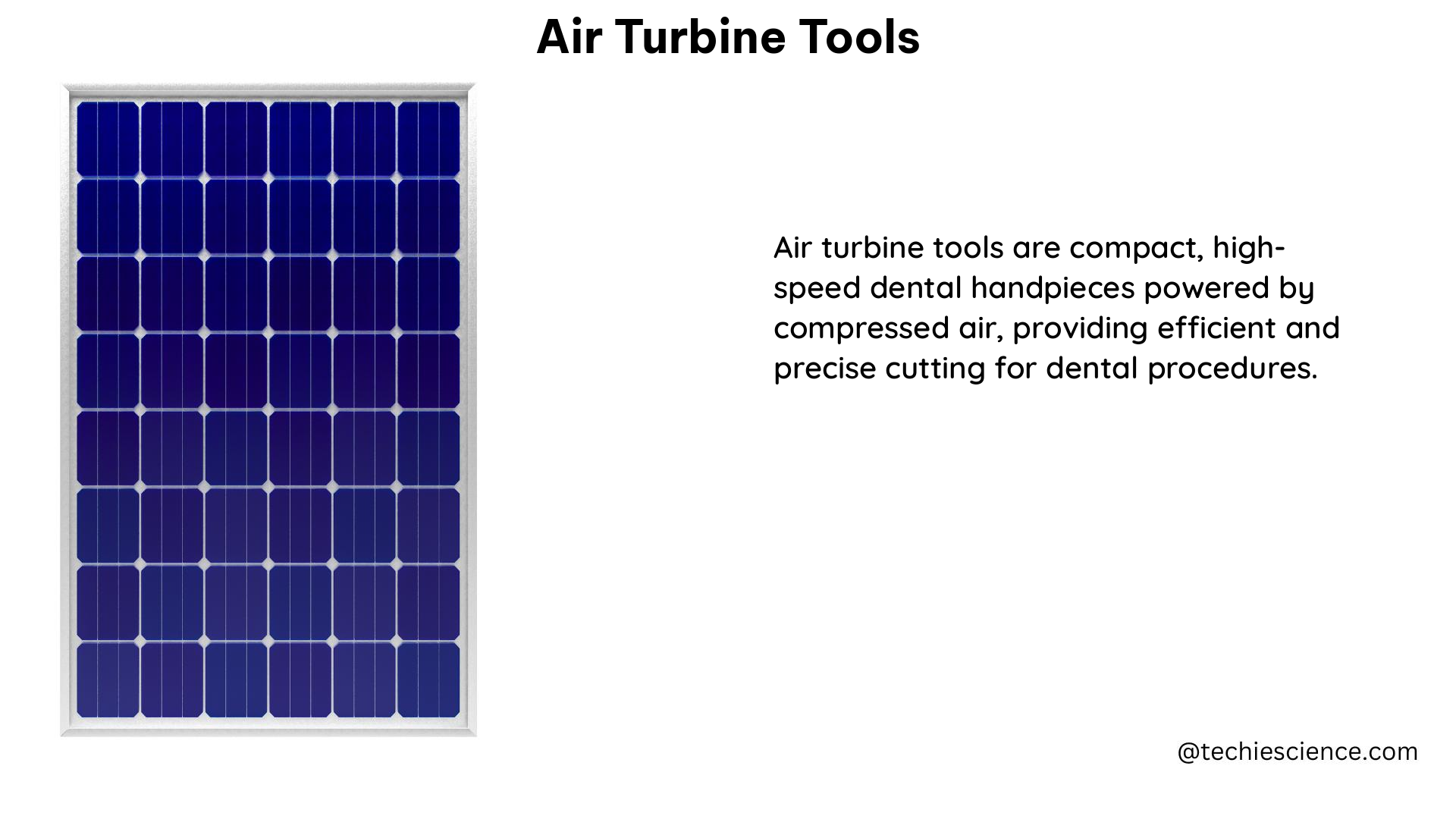Air turbine tools are specialized equipment used for the maintenance, repair, and manufacturing of air turbines, which are commonly used in power generation and aviation. These tools are designed to ensure precise and efficient measurements, enabling the detection of any deviations or defects in the turbine components. This comprehensive guide will delve into the intricacies of air turbine tools, providing you with a deep understanding of their functionality, applications, and the latest advancements in the field.
Operating Accuracy of Turbines
The operating accuracy of turbines directly affects their energy conversion efficiency. For instance, gas turbines used in generators and aircraft jet engines need to maximize their energy conversion efficiency to optimize performance and fuel consumption. Achieving this requires precise measurements and adjustments to various turbine components, including blades, rotors, and stators.
One key factor in maintaining high operating accuracy is the use of advanced dimensional measurement tools. These tools can measure critical parameters such as blade length, width, thickness, and overall shape with micron-level precision. By ensuring that each turbine component meets the stringent design specifications, operators can maximize the turbine’s efficiency and minimize energy losses.
Dimensional Measurement of Turbine Blades

Dimensional measurement of turbine blades is a crucial aspect of ensuring the optimal performance of gas turbines. These measurements include the blade’s length, width, thickness, and overall shape, which directly impact the turbine’s aerodynamic efficiency and power output.
The KEYENCE WM Series, for example, is a state-of-the-art dimensional measurement system designed specifically for turbine blade inspection. This system allows for quick and easy single-person measurement of turbine blades, significantly improving measurement efficiency and reducing the risk of human error. The WM Series utilizes advanced laser scanning technology to capture high-resolution 3D data, enabling precise dimensional analysis and comparison to design specifications.
Measurement of Turbine Stage Diameter and Small Parts
Large-scale turbine stages with diameters exceeding 3 m (9.8′) present a unique challenge for dimensional measurement. Traditionally, these workpieces would require at least two people to measure, due to the large number of measurement points and the complex shapes involved. This process is time-consuming and can be prone to errors.
The KEYENCE WM Series addresses this challenge by enabling a single person to measure these large-scale turbine stages. The system’s advanced laser scanning technology and intuitive software interface allow for efficient data collection and analysis, significantly reducing measurement time and improving overall accuracy. This capability is particularly valuable in the maintenance and repair of large industrial turbines, where precise dimensional data is essential for ensuring optimal performance and safety.
Measurement of Blade Assembly Accuracy
During turbine maintenance, it is often necessary to measure the parts of a turbine, including blades, without disassembling the entire assembly. This requires specialized tools that can accurately measure the assembled turbine’s dimensions, ensuring that all components are correctly aligned and within the required tolerances.
One such tool is the KEYENCE WM-X Series, which is designed for in-machine measurement of turbine components. This system uses a compact, high-precision laser displacement sensor to capture detailed dimensional data without the need for disassembly. By maintaining the integrity of the turbine assembly, the WM-X Series helps to reduce maintenance time and minimize the risk of damage during the measurement process.
Control Systems for Wind Turbines
Control systems play a critical role in regulating the power output and maintaining the stable, closed-loop behavior of wind turbines in the presence of turbulent wind inflow. These control systems utilize advanced algorithms and a variety of sensors to monitor and adjust the turbine’s performance in real-time, ensuring optimal energy generation and safety.
One key aspect of wind turbine control systems is the use of anemometers and other wind measurement devices to accurately detect changes in wind speed and direction. This data is then fed into the control system, which adjusts the turbine’s pitch, yaw, and other parameters to maintain the desired power output and minimize structural loads.
Additionally, modern wind turbine control systems often incorporate predictive algorithms and machine learning techniques to anticipate and respond to changes in wind conditions, further enhancing the turbine’s efficiency and reliability.
Conclusion
Air turbine tools are essential for the precise and efficient maintenance, repair, and manufacturing of air turbines used in power generation and aviation. These specialized tools, such as dimensional measurement devices, control systems, and in-machine measurement functions, play a crucial role in ensuring the optimal performance and safety of air turbines.
By mastering the use of air turbine tools, professionals in the field can unlock the full potential of these critical components, contributing to the overall reliability, efficiency, and sustainability of air turbine-based systems. This comprehensive guide has provided a deep dive into the various aspects of air turbine tools, equipping you with the knowledge and understanding to effectively utilize these advanced technologies in your work.
References:
– Quantifying Wind Turbine Wake Characteristics from Scanning Remote Sensor Data
– Advanced Control Design for Wind Turbines: Part I – Control Design, Implementation, and Initial Tests
– Smart Wind Turbine Data
– Closed-loop control of wind turbines using LIDAR
– Turbine Blade Measurement Case Study

The lambdageeks.com Core SME Team is a group of experienced subject matter experts from diverse scientific and technical fields including Physics, Chemistry, Technology,Electronics & Electrical Engineering, Automotive, Mechanical Engineering. Our team collaborates to create high-quality, well-researched articles on a wide range of science and technology topics for the lambdageeks.com website.
All Our Senior SME are having more than 7 Years of experience in the respective fields . They are either Working Industry Professionals or assocaited With different Universities. Refer Our Authors Page to get to know About our Core SMEs.